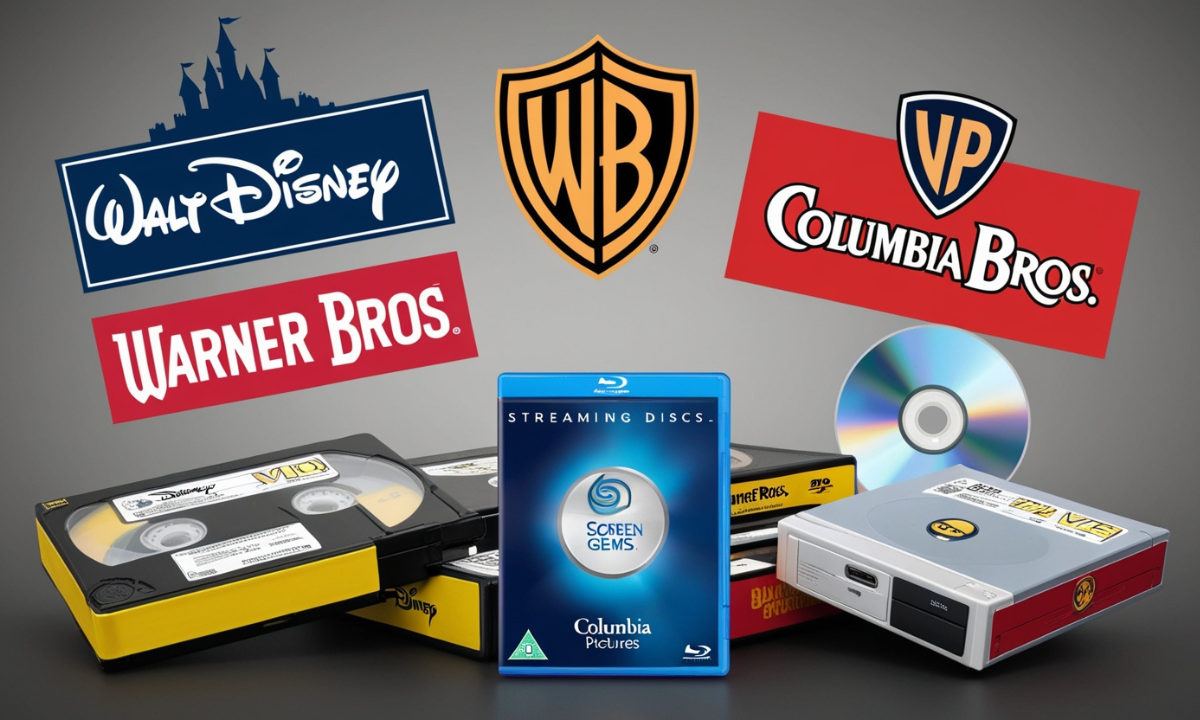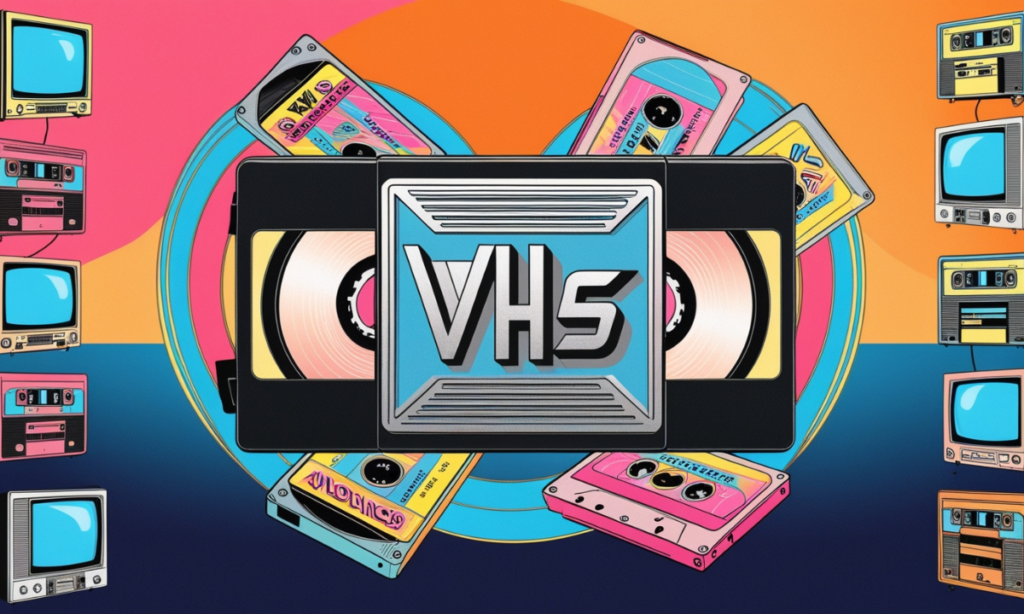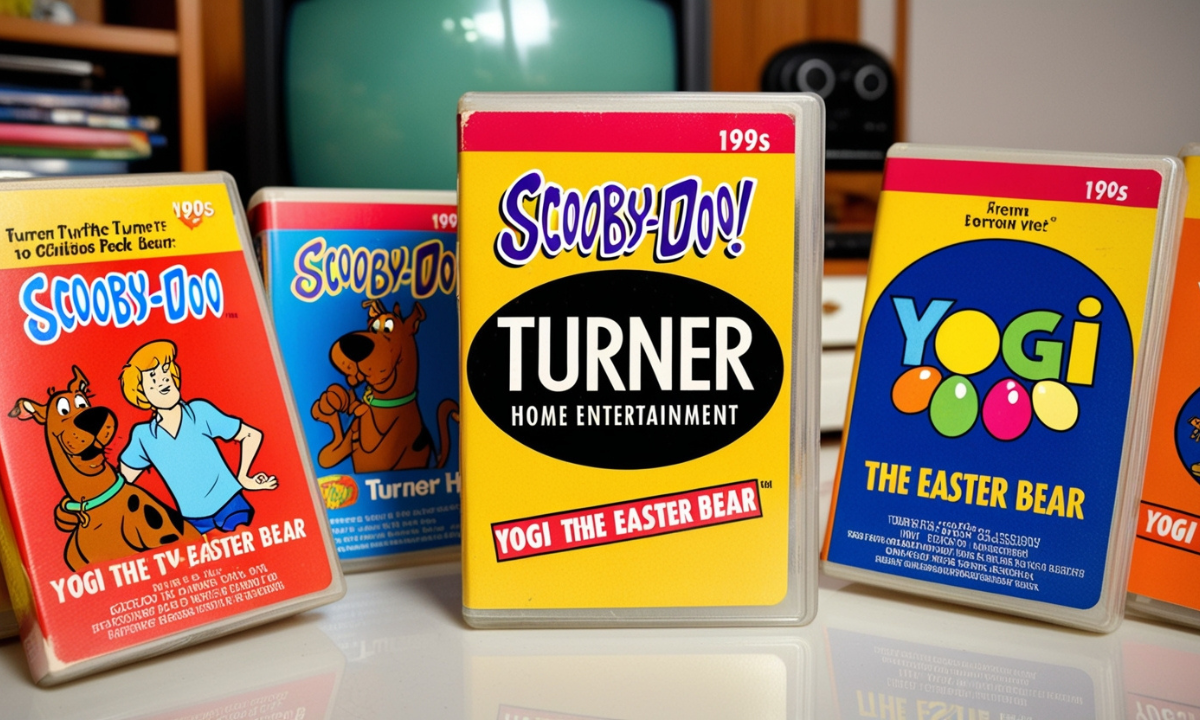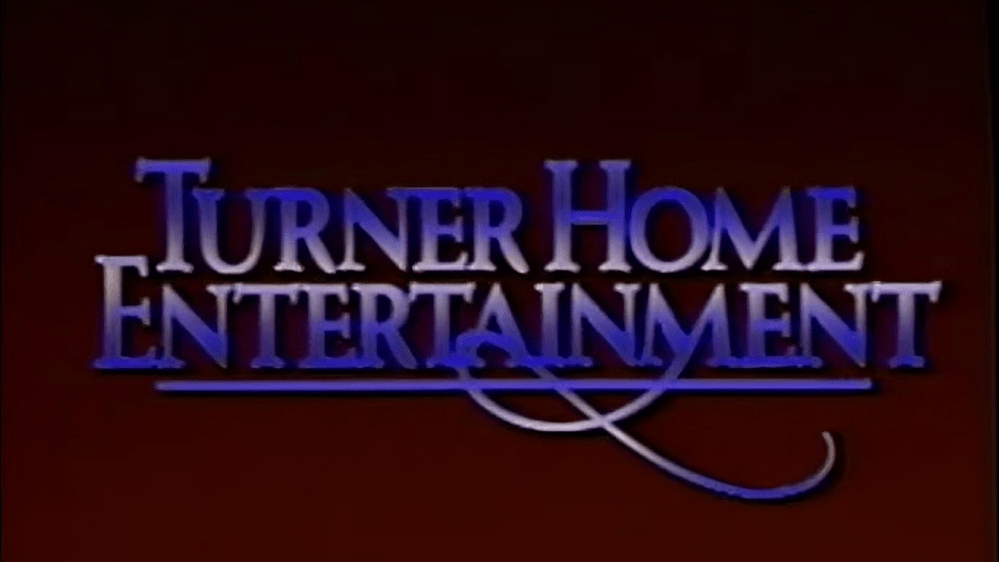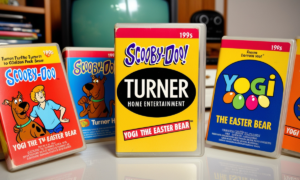Where can I find Feature Presentation on Turner Home Entertainment CLG Wiki. The course of home entertainment has changed dramatically, from the use of analog VHS tapes in the past to high-definition formats today, such as Blu-ray and streaming services. Major companies such as Walt Disney, Warner Bros, Turner Broadcasting, and others have been involved in producing home media history.
This article will shed a little more light on the industry’s lifestyle, which belongs to consumers just like any other activity, including their emphasis on the history of logo bumpers and VHS releases, as well as the history of some companies that ruled the market.
I will examine some of the prominent studios and how these studios made the transition from the VHS age to entertaining customers in the digital century.
Key Takeaways
- Evolution of Media: The home entertainment industry has shifted from VHS to Blu-ray and digital formats, with iconic logos representing major companies.
- Role of Major Studios: Companies like Walt Disney, Warner Bros., and Columbia Pictures played significant roles in shaping home media distribution.
- Logo Bumpers Significance: Logo bumpers were essential for branding and recognition, adding a visual and auditory identity to home entertainment.
- Transition to Digital: The shift to Blu-ray and digital platforms marked a turning point, making home media more accessible and diverse.
- Company Subsidiaries: Many major entertainment companies operate through various subsidiaries to handle their vast media empires and international distribution.
The Rise of Home Entertainment: From VHS to Blu-ray
Home entertainment made its leap forward by introducing the VHS (Video Home System) at the end of the 1970s. Viewing movies, television programs, and any other materials within the comfort of one’s home was quite radical. However, the transition from VHS to DVD, followed by Blu-ray and then digital media, reached fast-forward speed, changing how content was consumed and how studios released and marketed their content.
VHS and the Birth of the Home Video Industry
The advent of the VHS format made it possible for people to watch their beloved films from the comfort of their homes. This was indeed a game changer as far as media consumption was concerned. Locales like Walt Disney, Warner Bros, and Columbia Pictures started sorting their popular hit films and releasing them on VHS.
However, it was common to see this in the many releases, which were brand logos referred to as logo bumpers: Short clips showing the branding of the production or distribution members usually played before or after the feature presentation.
Notable VHS Releases
The major studios in the United States also released many cult films and television series on VHS. Here are three interesting moments from this list:
| Title | Studio | Year of Release | Notable Features |
|---|---|---|---|
| The Lion King | Walt Disney | 1995 | One of the highest-grossing animated films |
| Batman | Warner Bros. | 1989 | VHS release featured special packaging |
| Ghostbusters | Columbia Pictures | 1985 | Included bonus content on the VHS |
The Importance of Logo Bumpers in VHS Releases
Logo bumpers were not merely an accessory; they were important in the branding of home media. Companies such as Walt Disney Home Video and Warner Bros. used logo bumpers to create some form of identity and credibility with the audience.
For instance, the Walt Disney Company would place its castle logo at the start of a VHS movie each time before a release, while Warner Bros. used its emblem, which consists of a shield. These bumpers elevated the way the audience perceived the studio that had created the content.
Types of Logo Bumpers
- Walt Disney Home Video: Known for its signature castle logo, often accompanied by a sweeping score.
- Warner Bros. Home Entertainment: Frequently used its shield logo, representing a blend of tradition and modernity.
- Hanna-Barbera: Famous for the “swirling star” logo, used in the distribution of animated shows like The Flintstones and Top Cat.
The Shift to DVD and Blu-ray
By the end of the 1990s and the beginning of the salvation, VHS had been free DVD. Almost all electronic media is relatively easy to store. The DVD featured enhanced video and audio quality and interactive features to offer director commentary and added producer interiors such as outtakes and deleted scenes. This strategy allowed the studio to offer its beloved classics one more time, often in a completely new form and always with revised graphics and “nice extras.”
The transition to Blu-ray was in the mid-2000s. Now, this has high definition and more pixels, and the nature of the content is accurate image reproduction. This was a revolution in information technology that enabled film-making studios such as Universal Pictures and 20th-century Fox to reorganize their blockbuster movies for new generations of viewers.
The Transition to Blu-ray
| Feature | DVD | Blu-ray | Key Differences |
|---|---|---|---|
| Resolution | Standard Definition | High Definition | Blu-ray offers up to 1080p resolution |
| Storage Capacity | 4.7 GB | 25 GB to 50 GB | Blu-ray holds significantly more data |
| Special Features | Limited | Extensive | Blu-ray often includes additional bonus features |
The Role of Major Studios in Home Media Distribution
As the home entertainment market began to flourish, it was these major studios – Warner Bros., Walt Disney, and Columbia Pictures, who were instrumental in developing this market further.
These studios, together with Castle Rock Entertainment and Metro-Goldwyn-Mayer, also significantly contributed to vertical integration in selling films, television series, and original content to end users.
Warner Bros. and Its Subsidiaries
California-based entertainment conglomerate Warner Bros has other subsidiaries, and Warner Bros Home Entertainment, a Warner Bros subsidiary, is also one of the companies that actively participates in the home media market.
Due to its vast film and television catalog, Warner Bros has leveraged everything from VHS releases of classics like Batman to collections in Blu-Ray. Apart from Warner Bros, other cable networks like HBO and Turner Broadcasting System also added to the company’s success.
Warner Bros. Subsidiaries in Home Entertainment
| Subsidiary | Role in Home Entertainment | Key Releases |
|---|---|---|
| HBO Home Video | Focused on releasing HBO original content | Game of Thrones box sets |
| Castle Rock Entertainment | Handled distribution of films | The Shawshank Redemption VHS and DVD |
| Turner Broadcasting System | Distributed animated shows like Toon | Cartoon Network shows in syndication |
Walt Disney Company’s Home Entertainment Dominance
The Walt Disney Company was at the forefront and the most successful in the home video entertainment business because it had an outstanding collection of animated movies and TV series. Disney Home Video made certain that such great titles as The Lion King, The Beauty and the Beast, and Aladdin would be released on home video.
With the transition from VHS format to DVD and then Blu-Ray, Disney took advantage of remastering these films and re-releasing them with new picture quality and special features.
Buena Vista Home Entertainment
Buena Vista Home Entertainment was the company within Disney that handled home media for most of the movies produced through their studios. This was applicable to animated films as well as live-action films. Disney made sure that it became a dominant player in the home entertainment sector by incorporating a lot of brand imagery, including the castle brand.
The Importance of Logos in Branding Home Media
Logos help media brands position themselves in the much-crowded home entertainment market. They function as audio-viewing identity archives, as they are seen as quality indicators and evoke memories in audiences.
Screen Gems and Its Distinct Logos
Screen Gems a Columbia Pictures television production and distribution outfit is popularly known for its memorable bumper logos; the swirly star or the ‘S from Hell logos. The general audience would have seen this logo before popular television series and feature films from the company as well.
The distinguishing imagery and sound conveyed by the logo made it street; however, it was equally aptly unsettling to many viewers.
Turner Broadcasting’s Influence on Animated Media
Turner Broadcasting System, one of the subsidiaries of Time Warner Corporation spearheaded by Ted Turner, made a major shift in home entertainment programming due to its ownership of Cartoon Network, Hanna Barbera, and the baby boomer generation of classic animated programming syndication.
Hanna Barbera’s logos were kiddish but equally interesting and creative, and they were frequently found in homes before cartoon shows like Top Cat and The Jetsons.
The Digital Revolution and Streaming Era
The most recent step in the progression of home entertainment is the emergence of various new systems like Netflix, Disney Plus, and HBO Max.
These systems offer numerous movies and TV series instantly without requiring DVDs or Blu-ray discs. Organizations such as Warner Bros., Shawn Disney, and Universal Film fully support the concern of streaming dominating home entertainment.
WarnerMedia and HBO Max
WarnerMedia, the parent company of Warner Bros, launched HBO Max, a streaming platform marketing various content from Warner Bros, HBO, and other properties, including Cartoon Network and Turner Classic Movies TCM. The importance of this growth was the increasing significance of video on demand.
Streaming vs. Physical Media
| Media Type | Pros | Cons |
|---|---|---|
| Physical Media | Ownership of content, no internet needed | Bulky, may degrade over time |
| Streaming | Instant access, no physical storage | Requires an internet connection, no permanent ownership |
The Impact of Feature Presentation Bumpers on Viewer Experience
Feature presentation bumpers were not simply a means through which the audience could be introduced to a motion picture or television program; their significance went beyond this in that they efficiently thrilled their consumers and enhanced relations between the brand and the viewer.
It was not uncommon, during the VHS period, to see the display of a studio’s logo bedecked with music or visuals, including short animations and Picture stills of films the readers were witness to an enduring viewing ritual. These bumpers were important in fostering an unforgettable and emotional bond on the part of the studio to its audience. That bond survived to date despite the advent of the digital era.
Disney’s Magical Experience
Consider, for instance, the Disney feature presentation bumper, which usually begins with a Picture of a castle and magic music—a presentation revision of each animation studio’s abode. However, this symbol not only marks the beginning of a movie; it also transports the audience’s sentiments and pinnacles their zeal.
The magical sound and associated pictures made viewers, especially children, look forward to the thrilling or heart-warming scenes that joy awaited them. This strong emotion was a big factor behind the brand charisma of Disney for the home entertainment market promoting video home systems, furthermore particularly during the VCR period.
Warner Bros. and the Shield of Quality
Even Warner Bros, complete with a well-known shield logo and unforgettable fanfare, is a case in point of how bumpers created brand loyalty. The logo was instrumental in helping the audience identify betters the level of quality of the studio making the particular content. Be it a film or a television show, the Warner Animation Studios logo bumper added a touch of class to the viewing experience.
Screen Gems’ Iconic Swirling Star
As a branch of Columbia Pictures, Screen Gems stood out for its distinctive logo, which shows the swirling star or the S from Hell. The shrill sound of the logo was frightening to some. Still, for many other things, it was here to stay as part of the peripheral involving home entertainment, more so in the angle of television syndication.
The swirling star logo gradually became a brand, and when such content was screened, viewers perceived that they were watching something of high media and production.
Columbia Pictures and Its Legacy in Home Entertainment
On the grounds of the DVD industry, it can be argued that Columbia Pictures is the most successful company that sought to exploit the home entertainment market.
During the VHS and Letterbox DVD age, Columbia Pictures was one of the biggest players in home media sales. The company paved the way for and influenced how the home video market was presented, and even though the times have changed, the impact of that strategy remains relevant today.
Screen Gems and Television Distribution
One of Columbia Pictures’ most recognized divisions is Screen Gems, a company that has also been very active in producing and syndicating television programs.
From the 1950s to the 1980s, Screen Gems oversaw the distribution of many comical television shows, including Bewitched, I Dream of Jeannie, and The Partridge Family. Familiarly, everybody witnessed Columbia’s television side of the business through its rotating star with a tail Logo.
Columbia TriStar Home Video and VHS Releases
The development of Columbia TriStar Home Video by Columbia Pictures meant the foray into the home media business as this unit was responsible for the conduct of the VHS and later DVD releases of films by Columbia Pictures.
It is easy to see why both Ghostbusters and Men in Black were successful both at the cinema and in the Home Video. By all accounts, Columbia TriStar’s format and marketing of these Pictures on VHS made them a new norm in home entertainment worldwide.
My Opinion
The home entertainment business has repeatedly undergone transformation since the VCR era, passing through the DVD, Blu-ray, and culminating in the age of digital streaming. There are certain players like Walt Disney, Warner Bros., Columbia Pictures that have helped in this evolution.
As changes in technologies keep happening, the home entertainment trends in the future will be more of digital and streaming linear justification that such iconic logos and video cover classics will be relevant but will still be in the movie history.


